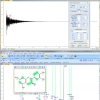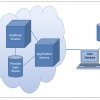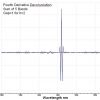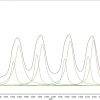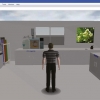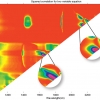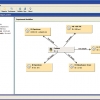Articles
Keeping the dream alive
Tony Davies, Peter Lampen, Stephen Heller and Evan Bolton report on the future of the spectroscopic data collected as part of the EuroSpec programme. Its long-term preservation is being guaranteed through the PubChem Project of the US National Library of Medicine.
Another one bites the dust
Tony Davies and Mohan Cashyap are concerned about your NMR data. When an article starts “On 10 October 2014 the impossible happened”, you will want to take note! Following the withdrawal of Agilent from the NMR business, Tony and Mohan consider three solutions to ensuring your NMR data is available now and into the future. If you have an NMR of any make, you will want to read this. Do remember that you can comment on the web version of the article.
A head in the Clouds? Part One
In the Tony Davies Column, Tony (A.N.) Davies and Mohan Cashyap introduce us to the potential for Cloud Computing in the lab. This is the first of a two-part contribution, and, for the second part, they need your help with your experiences of Cloud Computing in your lab or organisation.
The ACS 2013 symposium on exchangeable data formats
Robert Lancashire reports from the Chemical Information Division (CINF) of the American Chemical Society meeting at their recent 246th ACS National Meeting and Exposition.
Bob McDonald
Tony (A.N.) Davies and Robert Lancashire remember Bob McDonald who co-authored the first JCAMP-DX standard for infrared spectroscopy.
Examining diffuse reflection and transmission spectra more thoroughly: Part 1. Instrument noise
This Tony Davies Column is contributed by Karl Norris, known to many as “The father of near infrared spectroscopy”. He introduces his calculation method for fourth derivatives and shows how it can be used to extract instrument noise.
A new approach to improving automated analysis of proton NMR spectra through Global Spectral Deconvolution (GSD)
1H NMR spectra are usually interpreted by hand, which is very time consuming, and can become a process bottleneck in fields such as high-throughput NMR. Greater automation of the spectral analysis process has become essential if NMR is to be of value as a high-throughput analytical method in the future.
Spectroscopy resources
Time for a good whinge (“complain persistently and in a peevish or irritating way”—Oxford Dictionaries Online) and to get a little controversial. Having had a year to look at the resources available to us to help educate our budding spectroscopists, I have been disappointed that much of the educational resources available online appear incomplete or outdated. For a generation of students brought up in schools with interactive whiteboards, good quality spectroscopic teaching materials of this nature are almost non-existent.
The sound of science
I recently “discovered” a very interesting radio programme on BBC Radio 4. It is “devoted to the powerful, sometimes beautiful, often abused but ever ubiquitous world of numbers”. A few weeks ago we were asked to say what we were doing while listening to the programme. The next week we were told that nearly 2000 e-mails had been received and this data had been given to information designer David McCandless to turn into a graphic. When this was trailed I got the impression that something new and exciting was going to be displayed and I thought that the graphic would include sound. The graphic is good but rather “ordinary” and I was disappointed. This got me thinking about how we display information. Have we made any advance in the last 25 years? Could sound be used!
AnIMLs in from the wild: XML standards at LGC
Analytical Information Mark-up Language, better known as AnIML, has been around as a concept for a number of years, but how does an analytical chemist use it in the real lab? A team of R&D scientists at LGC has been finding out.
Opportunities and opinions
I would like to thank everybody who has taken the trouble to respond to my last column on Educating Spectroscopists.1 I am very happy that Ian has allowed me space to reproduce some of them in this edition.
Who has the best proton NMR crystal ball?
There has been much debate about which program can predict NMR spectra the best. It is well known within the NMR community that spectra prediction strongly depends on the “quality” of the starting data sets for those systems which use real data as a knowledge base. It has become a hot topic in some blogs, although disappointingly most of the authors tend to have affiliations to one software vendor or another.
Adobe PDF use in analytical information storage and archiving
When we set up ALIS GmbH one of the first major “discoveries” was probably the most embarrassing for me. Having worked on analytical data standards for so long, I seem to have successfully generated a blind spot for the developments which have taken place in the structure, standardisation and functionality of the Portable Document Format (PDF).2 Maybe it’s due to a subconscious aversion to what I had for a long time seen as a simplistic “get out” solution for those too lazy to convert data into a long-term, stable, vendor-neutral format. How often have we heard the “well... we just print to PDF” as an excuse for not having in place a properly thought through analytical data storage and archiving policy taking no account of the future use to which that data may well be put within an organisation.
Anyway, it has been pretty difficult for me to admit that my knowledge of the available functionality lay somewhere back in the early 1990s (see Figure 1) but I hope in this column to make some amends!
eMolecules and spectroscopy
Tony Davies investigates eMolecules. The system is essentially a clearing-house for metadata and chemical structure metadata indexing of numerous third-party chemical information providers.
Prague ELN days 2006 The search for an electronic laboratory notebook for research and teaching
Tony Davies,a John Trygg,b Pavel Matĕjkac and Karol Volka
aExternal Professor, University of Glamorgan, UK, Director, ALIS Ltd, Analytical Laboratory Informatics Solutions
bPhaseFour Informatics Limited, john.trygg@phasefourinformatics.com(link sends e-mail)
cDepartment of Analytical Chemistry, Institute of Chemical Technology, Technika 5, 166 28 Prague 6–Dejvice, The Czech Republic
To add or not to add: that is the question for your reference spectra prediction databases
Tony Davies,a Wolfgang Robienb and Jeff Seymourc
aExternal Professor, University of Glamorgan, UK, Director, ALIS Ltd, Analytical Laboratory Informatics Solutions
bInstitute for Organic Chemistry, University of Vienna, Austria
cModgraph Consultants, 1 Oakland View, Welwyn AL6 0RJ, UK
Embedding spectra and structures in your web pages
Tony N. Davies,a Robert J. Lancasterb and Peter Lampenc
aExternal Professor, University of Glamorgan, UK
c/o Waters Informatics, Europaallee 27–29, 50226 Frechen, Germany
bUniversity of West Indies, Mona Campus, Jamaica
cISAS, Institute for Analytical Science, Bunsen-Kirchoff-Strasse 11, 44139 Dortmund, Germany
Electronic intellectual property
Tony Davies
External Professor, University of Glamorgan, UK
c/o Waters Informatics, Europaallee 27–29, 50226 Frechen, Germany
Back to the future: total spectroscopic laboratory informatics
Tony Davies
External Professor, University of Glamorgan, UK, c/o Waters Informatics, Europaallee 27–29, 50226 Frechen, Germany
JCAMP-DX to Origin utility Tools for making spectra available to chemometricians
Peter Lampena and Tony Daviesb
aISAS, Institute for Analytical Sciences, Bunsen-Kirchhoff-Str.11, 44139 Dortmund, Germany
bExternal Professor, University of Glamorgan, UK. c/o Waters Informatics, Europaallee 27–29, 50226 Frechen, Germany


